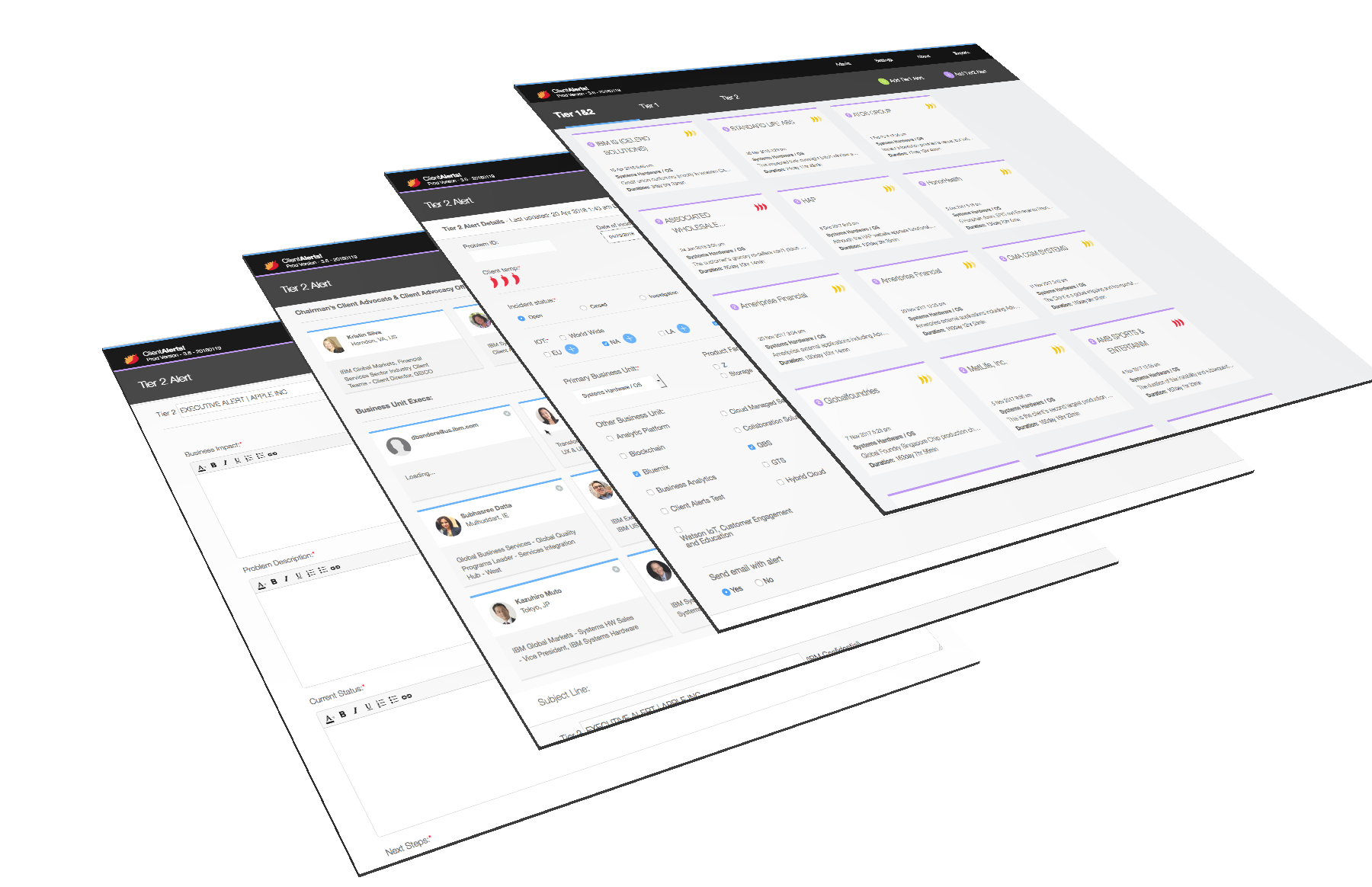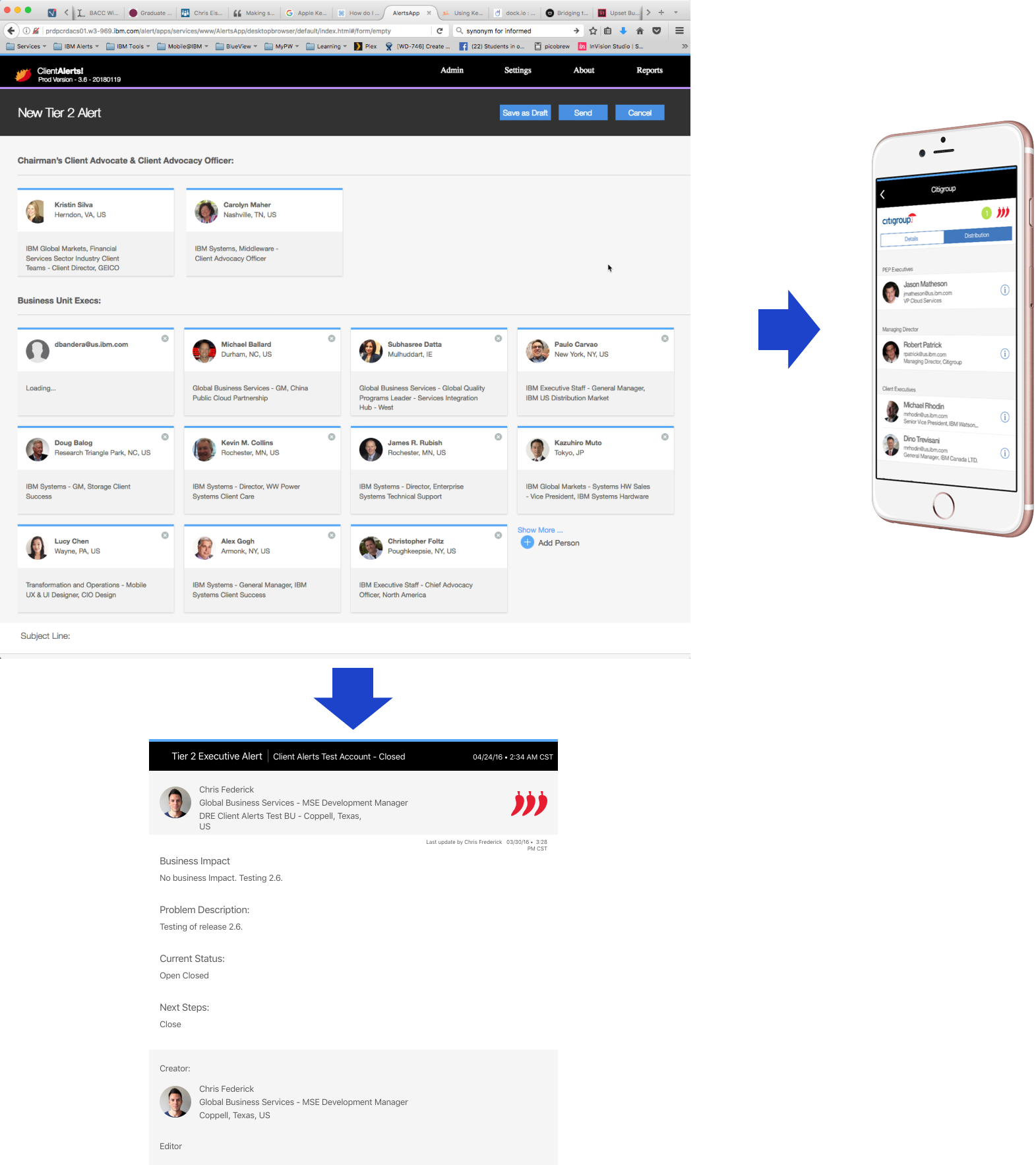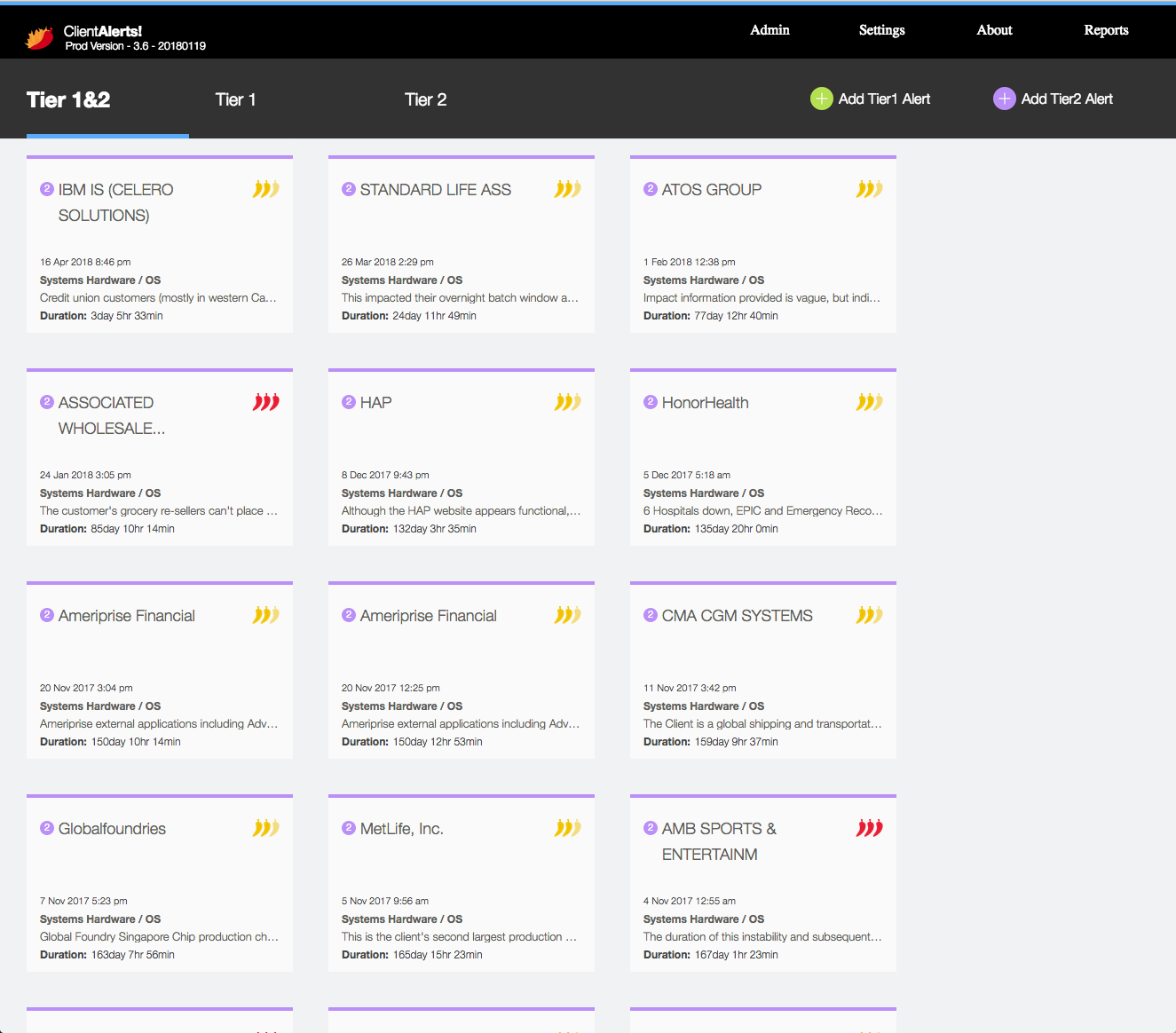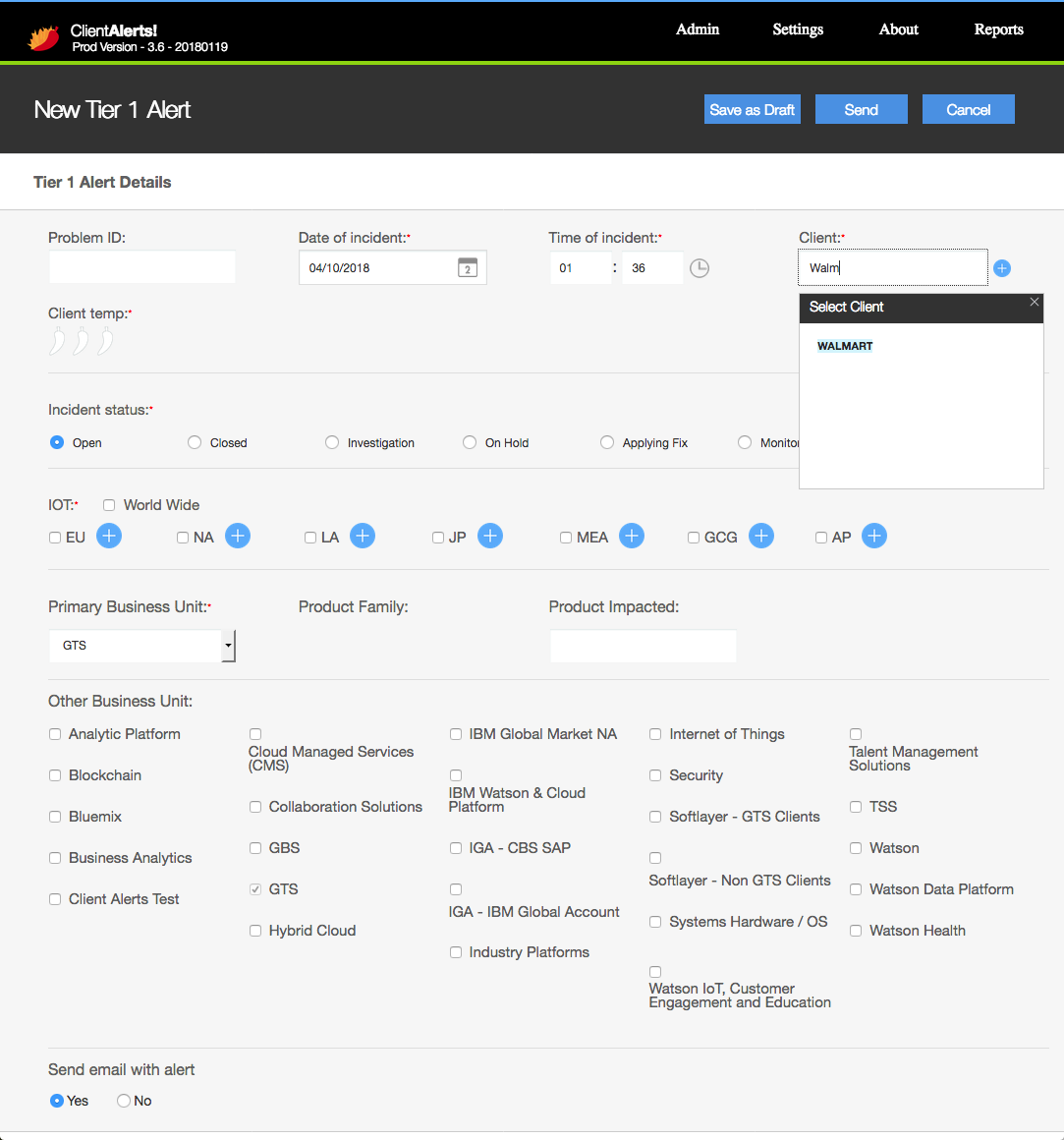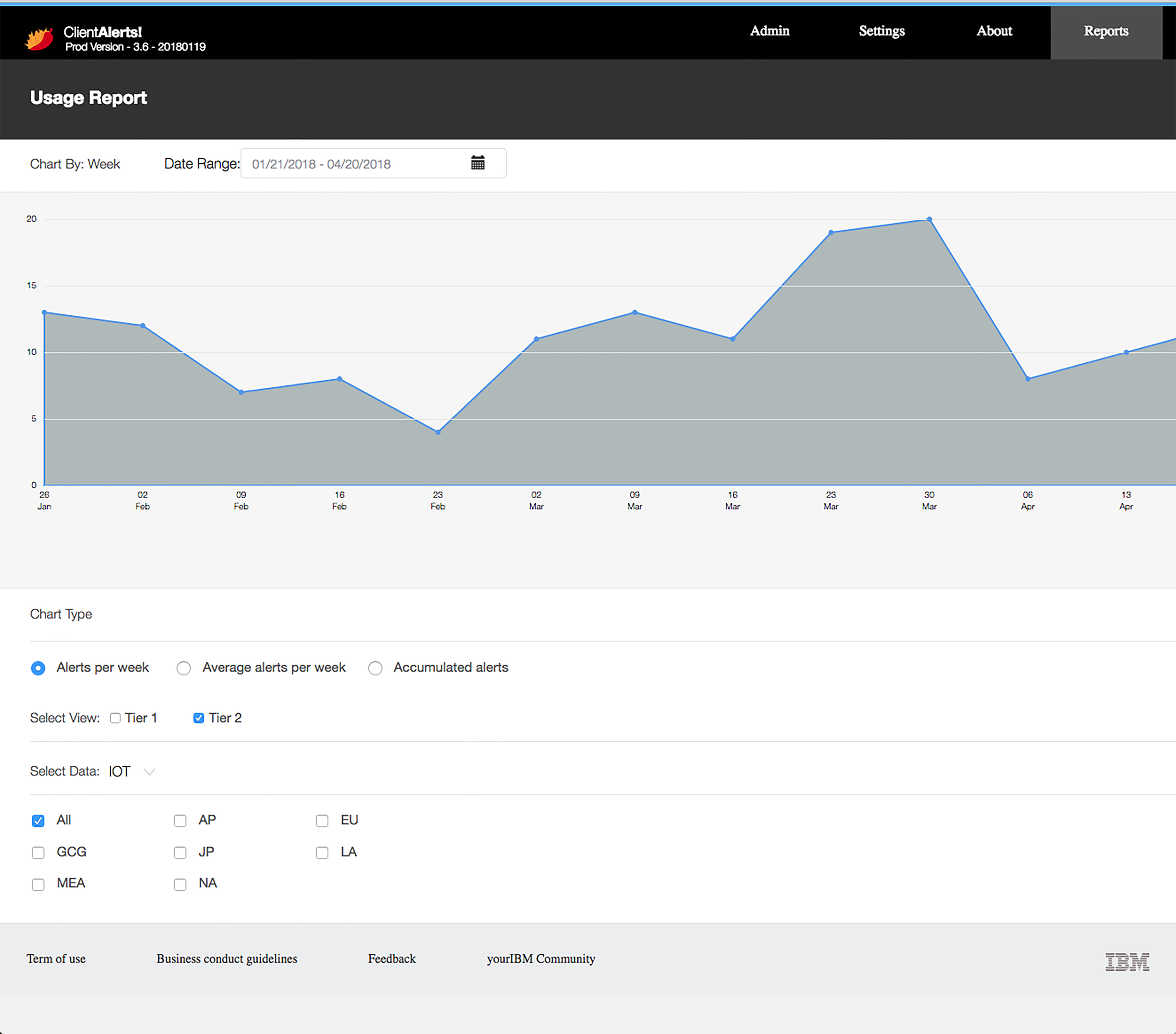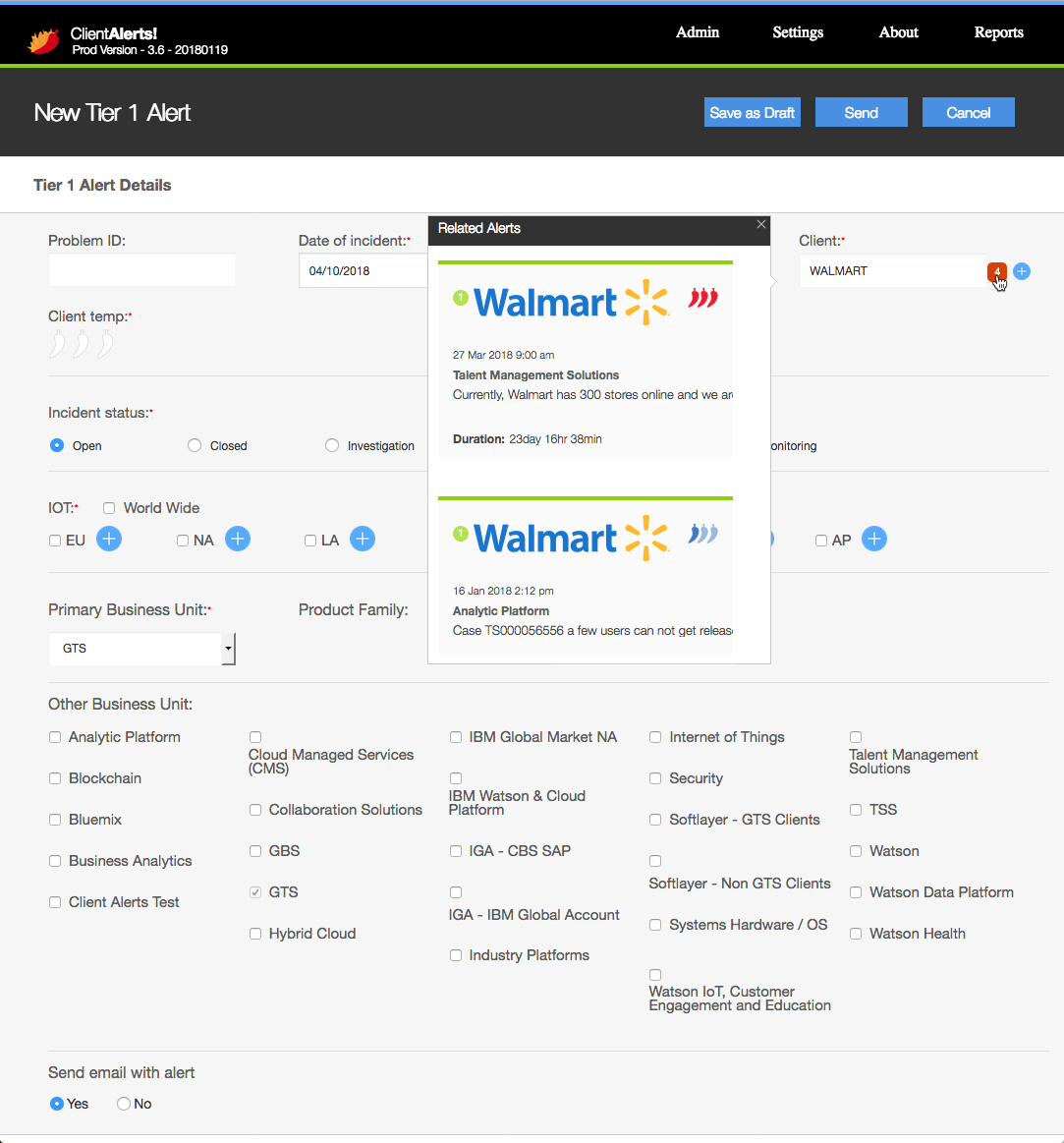Client First
Senior Executives need to know about big issues that impact clients. These are the most critical outages. A Tier 3 outage means the CEO will be on CNBC that night. Lets avoid that.
Keeps IBM’s Senior executives informed of the most major issues impacting their clients.
Client Alerts is a two-part project, sponsored by the Chief Advocacy Officer, that keeps IBM Senior Executives informed of significant problems that impact IBM clients.
This is a great example of designing the process first. The problem was simple, IBM’s CEO, Ginny Rometty, had a meeting with the CEO of a client and they asked about a severe outage that was ongoing, but Ginny was not aware of it.
This cannot happen.
It soon became clear each business unit at IBM has a different process for identifying severe issues and communicating them, if they had any process at all.
Thus I created clear process based on what was working to fill this gap.
Now my job, as designer, was to instantiate this process into a quick, usable and accurate system.
I conducted a series of interviews with designated responsible executives from each business unit and built a set of requirements to assist in creating these alerts.
The system had to be simple to use
but flexible and have some built-in knowledge. I designed both a web front-end to create alerts and a mobile alert app to catch them. And directed the development team to implement the designs.
SOLUTION
Common problem intake form
Push notifications for Execs to be in the know always
Design Solution
Executives create alerts on a web front-end. They fill out a form that guides them to enter the important information.
The Alert creators identify the client, business unit and geography affected. From this, I designed the system to create a distribution list that includes all of the people who need to know.
If the alert creator has full ability to add them or remove people from the list to fit the circumstances.
This system tries to assist the user at every point, while giving the user ultimate control over what gets sent and to whom.
Now all of the critical situations are communicated within IBM within minutes and documented in one easy-to-reference place. The web front-end helps create accurate alerts by assisting executives at each point, making the process faster and more accurate.

